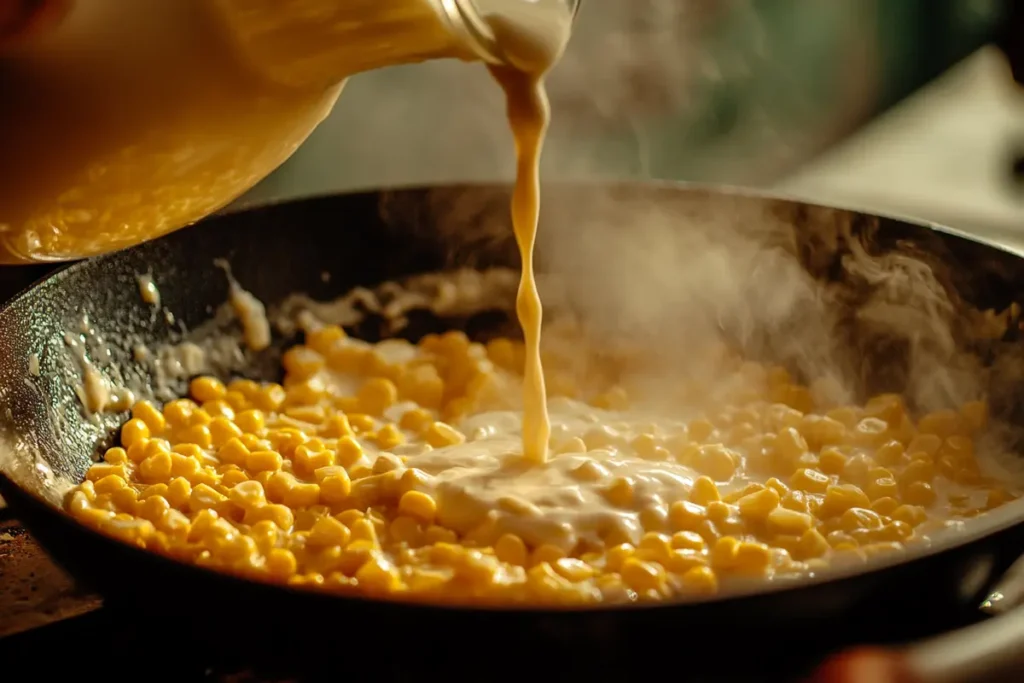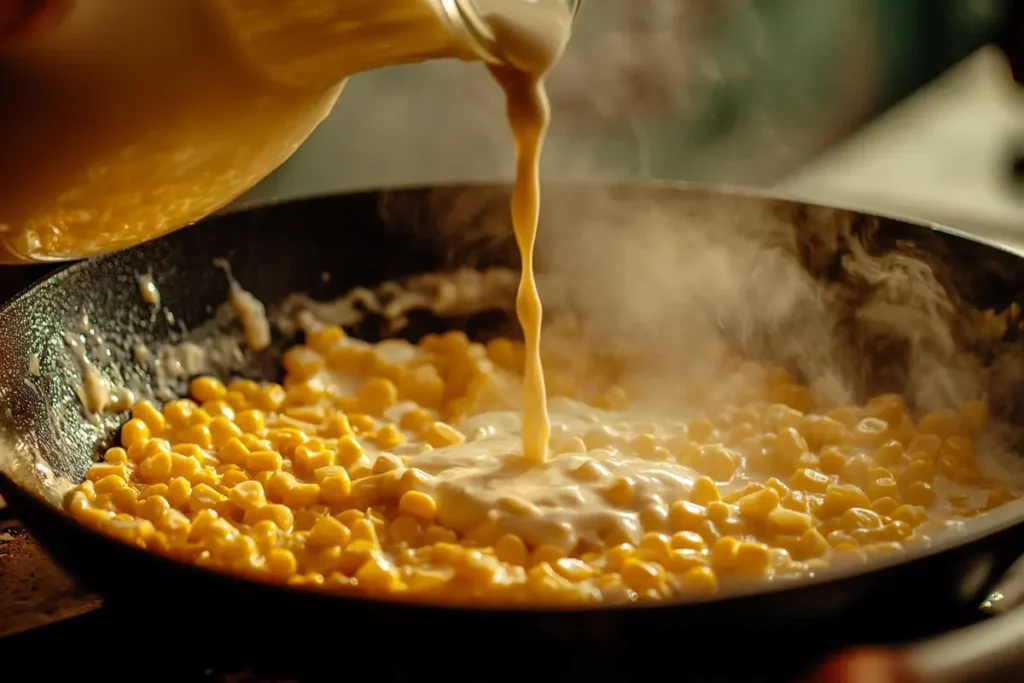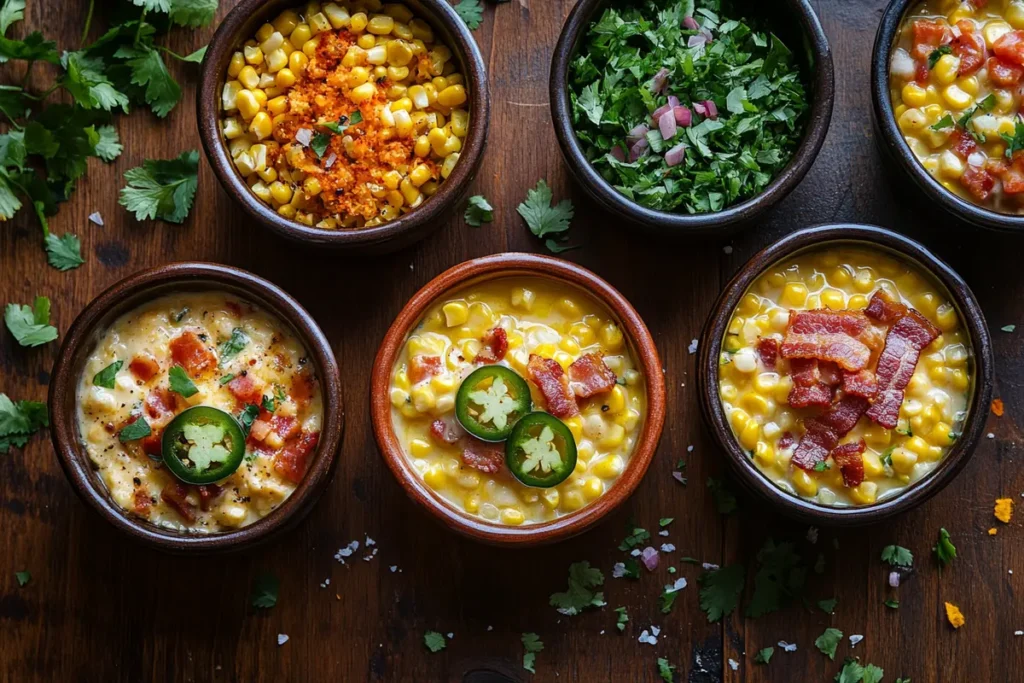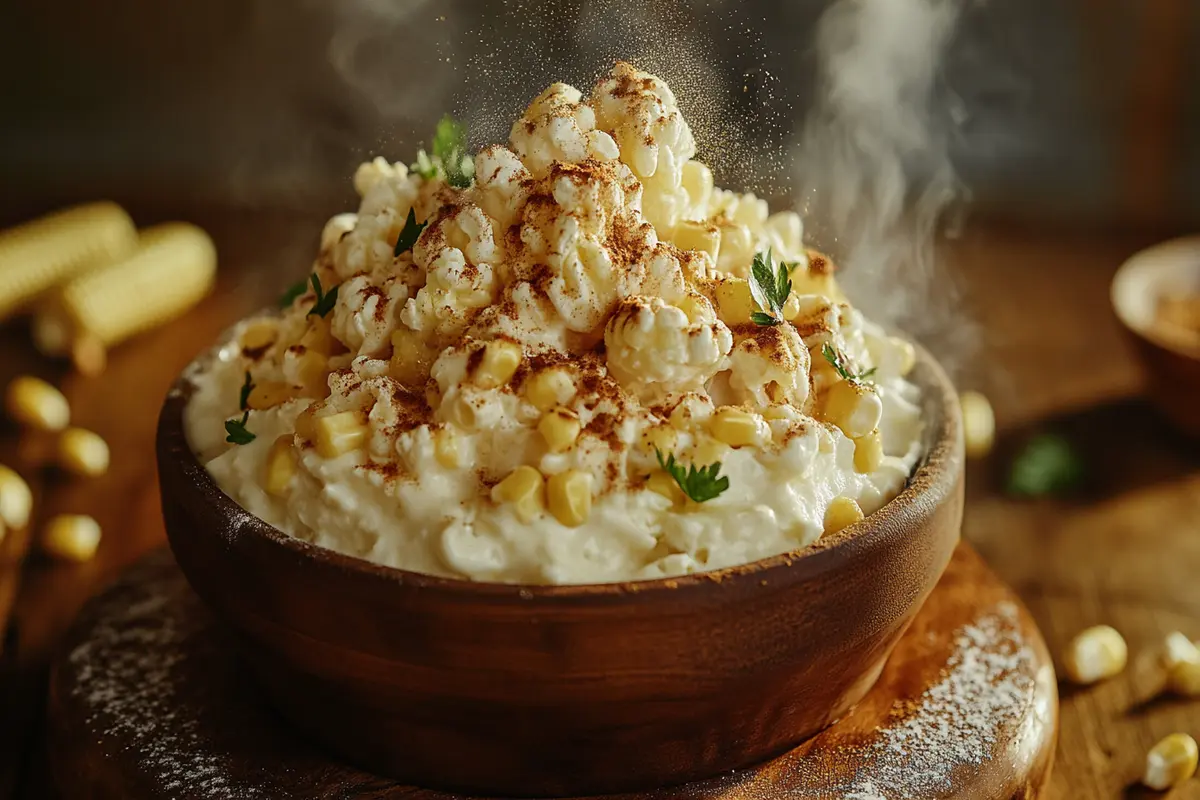Everything you need to know about cream corn: from its origins to cooking tips and nutrition information.
Introduction
Cream corn is a classic side dish that brings warmth and comfort to any meal. With its creamy texture and naturally sweet flavor, it’s no wonder this dish has remained popular across generations. Whether you’re preparing a holiday spread or looking for a comforting weekday side, this recipe is a versatile option that can complement a wide variety of entrees. In this guide, we will explore the origins of cream corn, how to make it from scratch, and some creative variations to elevate this simple yet delicious dish..
For those interested in the history of cream corn, it has an interesting background tied to American agriculture. Corn has long been a staple crop in the U.S., with Native Americans using it in many forms. Creamed corn became particularly popular in the 19th and 20th centuries as a comforting dish that could be easily made with simple ingredients. If you want to know more about corn’s nutritional benefits, check out this article on the health benefits of corn.
What Is Cream Corn?
Cream corn is a dish that combines corn kernels with a creamy sauce made from dairy, such as heavy cream or milk, and sometimes butter. It is known for its smooth and velvety texture, which comes from blending a portion of the corn and combining it with the whole kernels. This unique preparation gives cream corn its distinctive consistency, setting it apart from regular corn dishes.
The key to a great cream corn is balancing the natural sweetness of the corn with the richness of the cream. You can make cream corn from scratch using fresh, frozen, or canned corn. Each option has its own advantages: fresh corn gives you the sweetest flavor, while frozen or canned corn offers convenience. To learn about different varieties of corn and how they affect the flavor of your dish, see this resource on corn varieties.
Ingredients in Cream Corn
The basic ingredients for cream corn include:
- Corn Kernels: Fresh, frozen, or canned, depending on availability and convenience.
- Heavy Cream or Milk: Adds richness and a creamy texture.
- Butter: Enhances the flavor and provides a smooth mouthfeel.
- Seasonings: Salt, pepper, and sometimes sugar to enhance the natural sweetness of the corn.
Some variations may also include garlic, onion, or even cheese for added flavor.

How to Make Cream Corn from Scratch
Making cream corn from scratch is a simple process that only requires a few ingredients. Below is a step-by-step guide to help you create this delicious side dish at home.
Ingredients
- 4 cups corn kernels (fresh, frozen, or canned)
- 1 cup heavy cream
- 1/4 cup butter
- 1 tablespoon sugar (optional)
- Salt and black pepper to taste
Instructions
- Prepare the Corn: If you are using fresh corn, cut the kernels off the cob. If using frozen corn, thaw it before cooking.
- Cook the Corn: In a large skillet over medium heat, melt the butter. Add the corn kernels and cook for 3-4 minutes until they are tender.
- Blend a Portion of the Corn: Remove about 1 cup of the corn and place it in a blender. Add the heavy cream and blend until smooth.
- Combine: Pour the blended mixture back into the skillet with the remaining corn. Stir to combine and continue cooking for another 2-3 minutes.
- Season: Add salt, black pepper, and sugar (if using) to taste. Stir well and cook until the mixture is heated through.
- Serve: Serve warm as a side dish to your favorite main course.

Tips for the Perfect Cream Corn
- Use Fresh Corn When Possible: Fresh corn will provide the best flavor and sweetness, especially during peak season.
- Don’t Overcook: Overcooking the corn can make it lose its crispness. Aim for a tender but slightly firm texture.
- Adjust the Creaminess: For a thicker consistency, use less cream, or for a soupier texture, add a bit more cream or milk.
Cream Corn Variations
While the classic cream corn is delicious on its own, there are many ways to customize the dish to suit your preferences. Below are some popular variations:
Bacon
Add crumbled bacon to your cream corn for a smoky, savory twist. Simply cook the bacon until crispy, crumble it, and mix it into the dish just before serving. The saltiness of the bacon complements the sweetness of the corn perfectly.
Cheesy
For an extra indulgent version, add shredded cheddar cheese or Parmesan to the dish. Stir in the cheese after the cream has been added, allowing it to melt and create a rich, gooey texture.
Spicy
To add a kick to your cream corn, mix in diced jalapeños or red pepper flakes. The heat from the peppers pairs well with the creamy base, creating a balanced and flavorful side dish.
Cream Corn Casserole
Transform your cream corn into a hearty casserole by adding a few extra ingredients. Mix the cream with egg, flour, and a bit of baking powder, then bake it until it’s set and golden on top. This variation works well as a comforting side dish for family gatherings.
Herb-Infused
Elevate your cream corn by adding fresh herbs like thyme, basil, or parsley. The herbs add a burst of freshness that complements the rich, creamy base. Simply chop the herbs and stir them in at the end of cooking for a fragrant twist.
Cream Corn with Vegetables
Add more texture and nutrition to your cream by incorporating additional vegetables. Bell peppers, zucchini, or peas work well with the creamy corn base, adding both color and flavor to the dish.

Nutritional Information and Health Benefits
Cream corn is a rich and satisfying dish, but how does it stack up nutritionally? Corn itself is a good source of vitamins and minerals, particularly vitamin C, magnesium, and fiber. However, due to the addition of butter and cream, it is higher in calories and fat compared to plain corn.
Calories and Macronutrients
- Calories: A half-cup serving of cream corn typically contains around 150 calories, depending on the recipe.
- Carbohydrates: Corn is naturally high in carbohydrates, providing energy and fiber.
- Fat: The cream and butter contribute to the fat content, making it a richer dish.
- Protein: Corn also contains a small amount of protein, though it is not a significant source.
Vitamins and Minerals
Corn is rich in several vitamins and minerals, including:
- Vitamin C: Supports immune function and skin health.
- Magnesium: Important for muscle and nerve function.
- Potassium: Helps regulate fluid balance and muscle contractions.
- Folate: Crucial for DNA synthesis and cell growth, particularly important for pregnant women.
Is Cream Corn Healthy?
The healthiness of cream corn depends on how it’s prepared and how it fits into your overall diet. If you’re looking to reduce calories or fat, you can substitute heavy cream with low-fat milk or plant-based alternatives. Additionally, reducing the amount of butter can help make the dish lighter without sacrificing too much flavor.
Cream corn can be enjoyed in moderation as part of a balanced diet. For a healthier version, consider the following adjustments:
- Reduce the Cream: Use half-and-half instead of heavy cream to cut down on calories and fat.
- Use Olive Oil Instead of Butter: Olive oil is a heart-healthy fat that can be used in place of butter.
- Add More Vegetables: Including more vegetables increases the fiber content and adds valuable nutrients.
Cream Corn in American Cuisine
This recipe has a long-standing history in American cuisine, particularly in Southern cooking. It’s a staple at holiday gatherings, barbecues, and Sunday family dinners. Its rich, comforting flavors make it the perfect side dish for classic American entrees like fried chicken, barbecue ribs, or meatloaf. Let’s explore how cream corn fits into different regional cuisines across the United States.
Southern Comfort Food
In the Southern United States, this recipe is a beloved dish that often finds its way onto tables during festive occasions. It pairs wonderfully with other Southern classics like buttermilk biscuits, collard greens, and macaroni and cheese. The sweetness of the corn contrasts nicely with the savory, smoky flavors commonly found in Southern cuisine, creating a well-balanced meal.
Midwest Harvest Dishes
In the Midwest, where corn is a major crop, this recipe has a special place in harvest celebrations. During the late summer and early fall, when fresh corn is abundant, many families prepare cream corn using corn straight from the cob. It’s often served alongside pot roast or pork chops, highlighting the agricultural bounty of the region.
Holiday Gatherings
During holidays like Thanksgiving and Christmas, cream corn is a popular side dish. Its creamy texture complements roasted turkey, ham, and mashed potatoes, making it a comforting addition to the holiday table. For many families, it is a nostalgic dish that brings back memories of festive gatherings and time spent with loved ones.
Frequently Asked Questions
What Is the Difference Between Creamed Corn and Cream Corn?
While the terms are often used interchangeably, there can be a slight difference between creamed corn and cream corn. Creamed corn usually refers to a dish where the corn kernels are cooked with cream and then partially pureed to create a thicker consistency. On the other hand, cream corn often leaves more whole kernels intact, giving it a chunkier texture. Both versions are delicious, but the level of creaminess may vary based on the preparation method.
Can You Just Eat Creamed Corn?
Absolutely! it is delicious as a side dish, but it can also be eaten on its own. It’s often served alongside grilled meats, fried chicken, or even roast vegetables. Its rich flavor and creamy texture make it a comforting and filling dish, perfect for any meal.
Is Creamed Corn Healthy for You?
Cream corn can be part of a healthy diet when enjoyed in moderation. It provides essential nutrients like fiber, vitamin C, and magnesium. However, due to its higher fat content from cream and butter, it should be consumed in balanced portions. For a healthier version, consider reducing the amount of cream or substituting with a lower-fat alternative.
How Can I Make Cream Corn Dairy-Free?
To make cream corn dairy-free, use coconut milk or almond milk instead of heavy cream. Vegan butter can also be used in place of regular butter. This version will still be creamy and delicious while accommodating those who are lactose intolerant or following a vegan diet.
Can Cream Corn Be Frozen?
Yes, cream corn can be frozen for later use. Allow the dish to cool completely before transferring it to an airtight container or freezer bag. It can be stored in the freezer for up to 3 months. When ready to eat, thaw it in the refrigerator overnight and reheat it on the stove over low heat, stirring occasionally.
What Can I Serve with Cream Corn?
Cream corn pairs well with a variety of dishes. It’s often served as a side dish with grilled meats, barbecue, or fried chicken. It also pairs well with baked potatoes, rice, or green salads for a well-rounded meal. For a vegetarian option, serve cream corn alongside roasted vegetables or quinoa.
How Do I Thicken Cream Corn?
If your cream corn is too runny, you can thicken it by mixing a small amount of cornstarch with water to create a slurry. Stir the slurry into the cream corn while it’s cooking, and continue to cook until it reaches the desired consistency. Another option is to blend more of the corn to create a thicker base.

